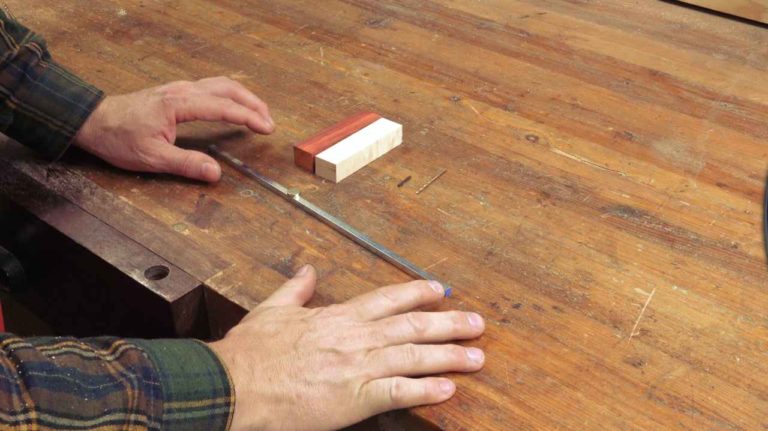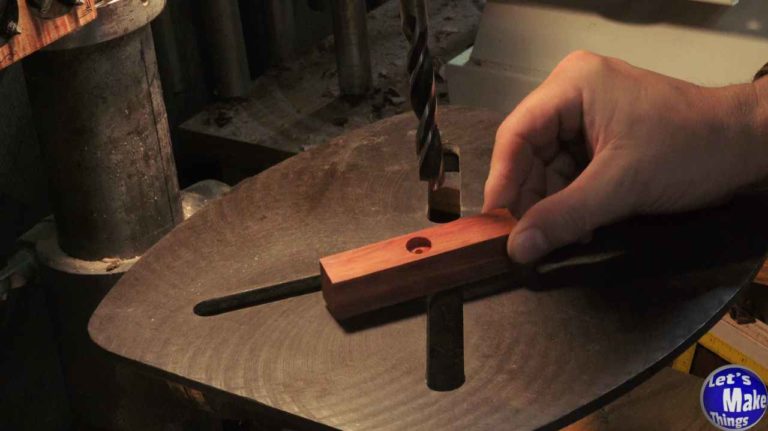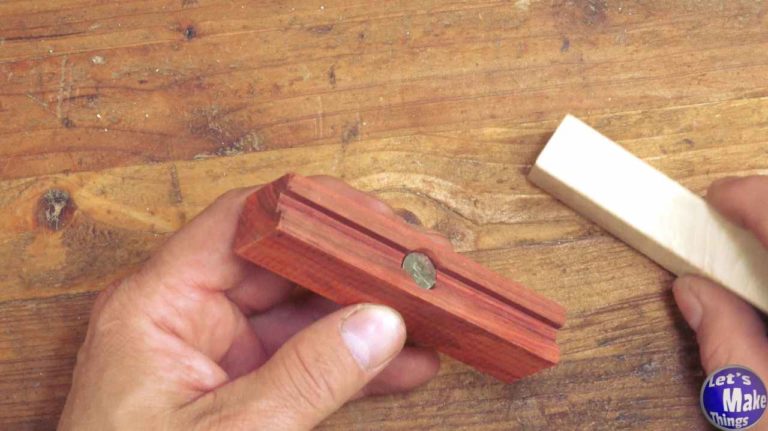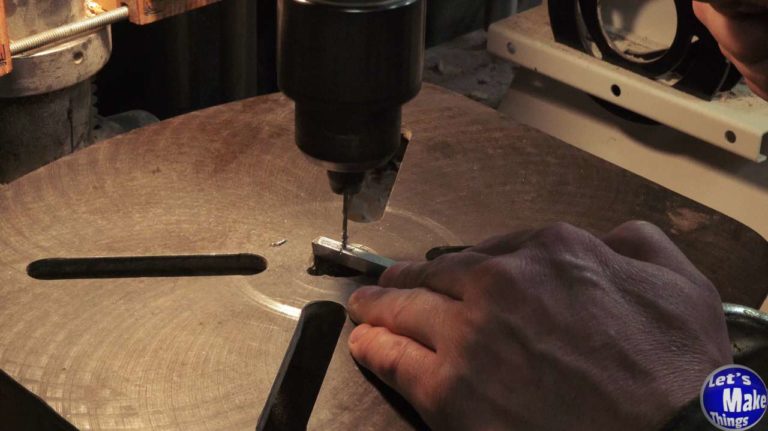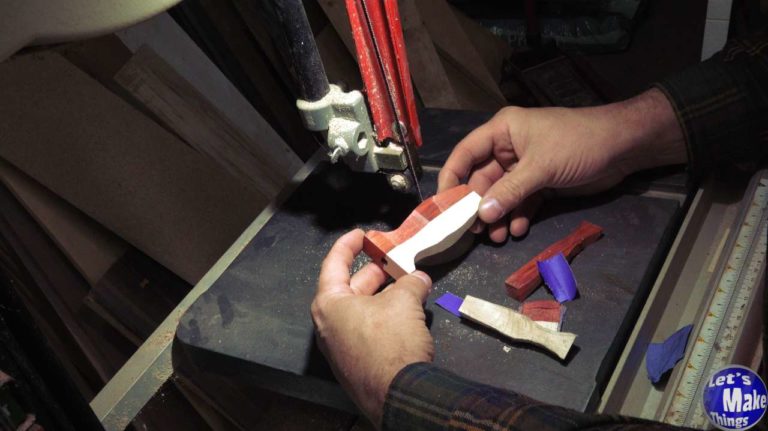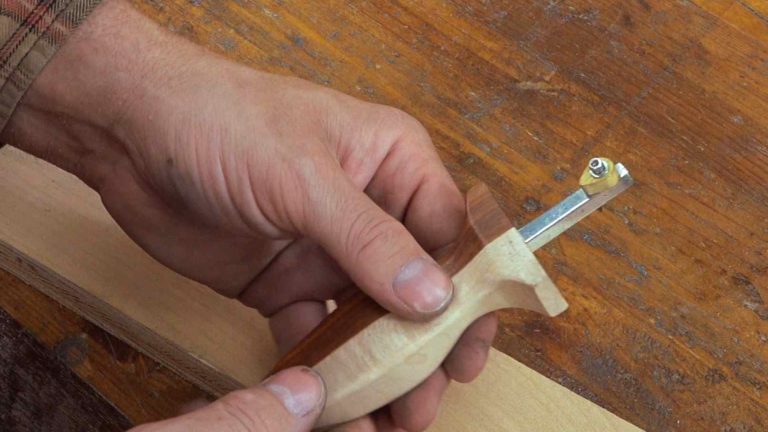Make a marking gauge
Published April 16th, 2023 / UPDATED October 19th, 2023
A good mark is a difficult process to achieve on your stock. If you’re going to add dowels into the end of a piece of wood, for example, who wants to measure the center of both sides and then draw a line? With this marking gauge, you set it to the width you’re looking for and use the base as your straight edge to add the mark. This is simplistic and can be made for less than 5 dollars from items that are in your local hardware store.
I really think this tool should be in everyone’s shop…it’s just so each to use and absolutely accurate as it can be. The entire build is below, which I recommend watching first.
My earlier version of this useful tool is → here ←.
Marking Gauge Bitesize
watch all steps in this video before starting
Please use the material and tool list below as a guide to finding the products locally.
Materials
- (2) 3/4″ x 15/16″ x 4″ Hard/Soft wood
- 1/4″ x 12″ Steel dowel
- (2) 1/2″ Magnets (Optional, but oh so nice to have)
- 2mm Graphite
- Wood glue & Epoxy
Tools Needed/used
- Table saw
- Drill press
- 1/2″ Drill bit
- 5/64″ Drill bit
- File (optional)
As an amazon associate I earn from qualifying purchases.
Step by step instructions
1. Material explanation
We’ll need only three materials to make this, excluding wood glue, epoxy and graphite. The grain direction of the hard/softwood needs to be vertically longer so that the end grain is narrower than the side grain.
While you could use welding steel, it’s more of hassle compared to the zinc coated rods. Stainless steel will be incredibly difficult to drill through so sticking with mild steel is your best option.
For the tool side, you’ll really want a cobalt 5/64″ drill bit…you’ll do less swearing later on, trust me.
5. Gluing body
We’ll glue both halves together, but go ahead and add epoxy to the magnet…something I didn’t do and wish I had. I added the bar with the glue up to keep things straight and came back after about 30-60 minutes (with the clamps still on) and smacked the dowel until I removed it and cleaned off the glue.
9. Usage, sharpening, magnet
Using it is pretty self explanatory: Use a ruler and set the height. I used a file to give me a nice bevel. The point of the lead should go in from the broken part of the graphite so that it doesn’t push out when you use this, but I strongly recommend adding a magnet to the top, above the graphite. It makes such a big difference.
10. UPDATE: Optional, flipper
The magnet works, it really does. But the one folly it has is that it…catches anything that’s magnetic on your workbench. It’s annoying and it’s avoidable. I created a separate video that shows how to navigate around this problem by creating a little flap that’s able to be moved to insert a piece of 2mm graphite and slid and locked back. It requires a 4-40 bit and drill bit and fixes the problem. Click on the image to watch the video.
Tip Jar
If you found any errors on the page, please use my email below and contact me!

